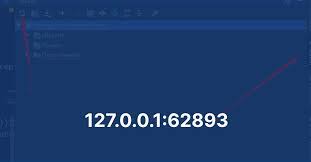Understanding 127.0.0.1:62893

Introduction
In the realm of networking, certain IP addresses and port numbers hold special significance. One such address is 127.0.0.1, commonly referred to as localhost. When paired with a port number like 62893, it forms a specific endpoint often used for various network-related tasks. This article aims to demystify the combination of 127.0.0.1:62893, exploring its purpose, common uses, and significance in both development and practical applications.
What is 127.0.0.1?
Localhost and Loopback Address
127.0.0.1 is known as the loopback address in IPv4 networking. It is reserved for use on a device to refer to itself. When a device sends data to 127.0.0.1, it is effectively communicating with itself. This is an essential feature for testing and network diagnostics, as it allows developers and system administrators to test network software and services without requiring a physical network connection.
Importance in Networking
The loopback address is crucial for troubleshooting and development. By using 127.0.0.1, developers can simulate network connections and test software in a controlled environment. This address ensures that the network stack and related services are functioning correctly on the local machine before deploying them to a live environment.
Understanding Port Numbers
The Role of Port Numbers
Port numbers are used in networking to specify different endpoints or services on a device. They allow multiple services to run on a single IP address, each identified by a unique port number. For instance, web servers typically use port 80 or 443 for HTTP and HTTPS traffic, respectively.
Dynamic and Ephemeral Ports
Ports can be categorized into well-known, registered, and dynamic (or ephemeral) ports. Well-known ports range from 0 to 1023 and are reserved for standard services. Registered ports range from 1024 to 49151 and are assigned to specific services by the Internet Assigned Numbers Authority (IANA). Dynamic ports, ranging from 49152 to 65535, are used for temporary connections and are often dynamically assigned by the operating system.
Combining 127.0.0.1 with Port 62893
Common Uses
When paired together, 127.0.0.1:62893 refers to a specific service or application running on the local machine. Port 62893 falls into the dynamic or ephemeral port range, suggesting it is used for temporary or application-specific purposes. This combination is often seen in development environments where developers test web applications, APIs, or other network services.
Example Scenarios
- Development and Testing: Developers frequently use 127.0.0.1 with random dynamic ports like 62893 to test web servers, databases, and other applications locally. This allows for quick iteration and debugging without impacting external systems.
- Local Servers: Applications like Docker or virtual machines might use such combinations to expose services running inside containers or virtual environments to the host system.
- Proxy Servers and Tunneling: Tools like SSH tunnels or proxy servers might use dynamic ports to forward traffic securely from one endpoint to another, using 127.0.0.1 to keep the communication local.
Significance in Modern Development
Isolation and Security
Using localhost (127.0.0.1) ensures that the communication is confined to the local machine. This is vital for security, as it prevents external access to the services being developed or tested. It also provides isolation, ensuring that local changes do not affect other systems or users.
Efficiency in Testing
Local testing with 127.0.0.1 and dynamic ports like 62893 allows developers to quickly spin up and tear down services. This agility is crucial in modern agile development practices, where continuous integration and continuous deployment (CI/CD) pipelines require rapid feedback and iteration.
Troubleshooting and Diagnostics
The loopback address is indispensable for network troubleshooting. By testing services locally, developers and system administrators can identify and resolve issues before they propagate to production environments. Tools like curl, telnet, and netcat often utilize 127.0.0.1 for diagnosing network problems.
Conclusion
The combination of 127.0.0.1:62893 represents a critical aspect of modern networking and software development. Understanding the role of localhost, port numbers, and their interplay is essential for anyone involved in developing, testing, or managing networked applications. By leveraging the loopback address and dynamic ports, developers can create secure, efficient, and robust applications, ensuring they perform correctly in live environments. This knowledge not only aids in development but also enhances troubleshooting capabilities, making it a cornerstone of effective network management and software development practices.
